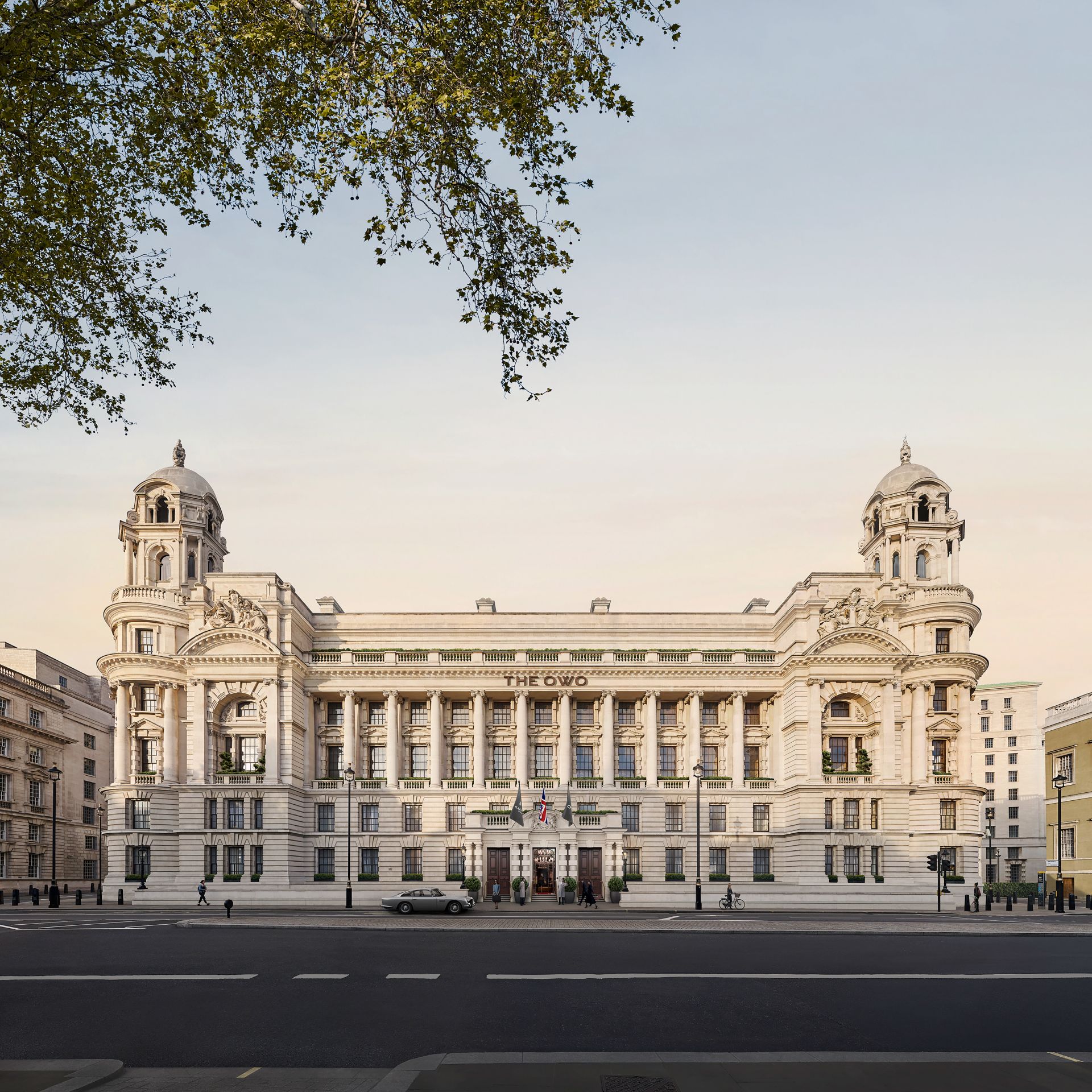Hello,
Member status:
Reward points:
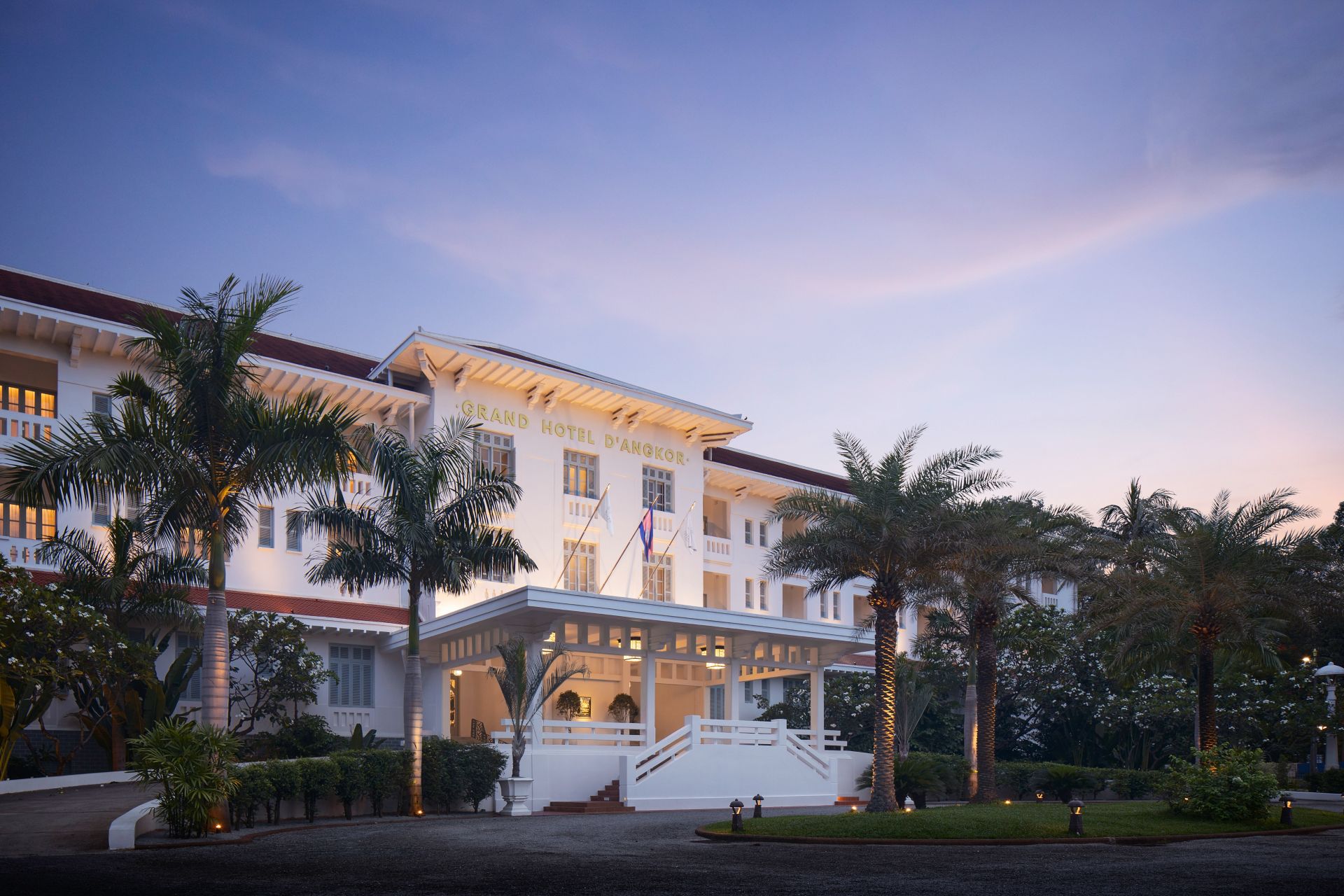
About
A destination in its own right
Heritage buildings and French gardens in a plantation-style setting.
Grand Hotel d'Angkor's location in the leafy Old French Quarter of Siem Reap, facing the Royal Palace and close to the Angkor National Museum, makes it the perfect spot to begin your Angkorian adventure. From here it is a short stroll or tuk tuk ride along the beautiful riverside to the town's colourful markets and an 8 km ride to the fabled temples of Angkor; the new Siem Reap International Airport is 39 km away.
Explore Grand Hotel d'Angkor
Step into the pages of history and write your own chapter with the help of our exceptional facilities and services.
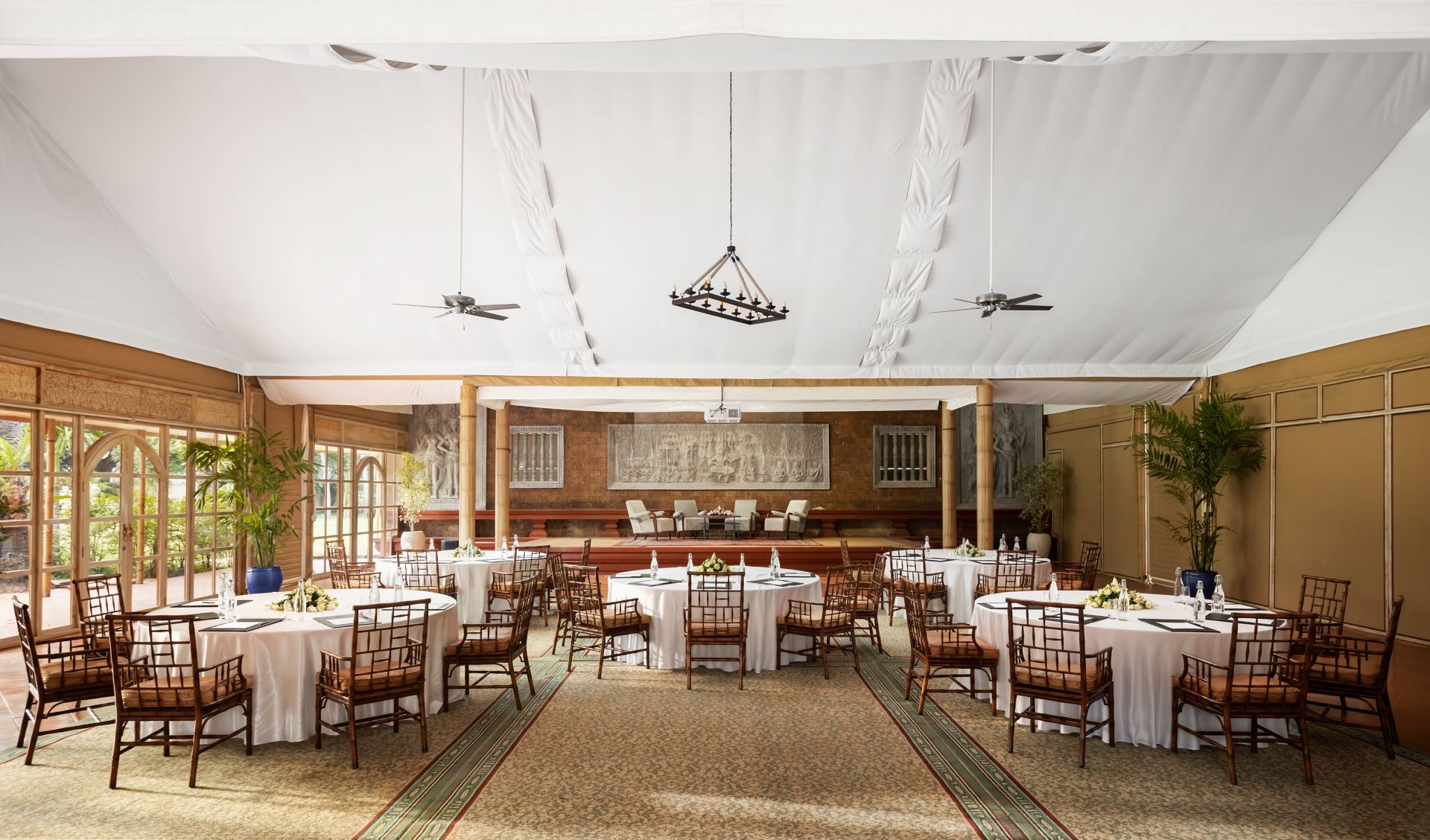
Raffles Marquee
Custom-built events space perfect for all occasions, hosting traditional Khmer dance performances every Saturday night.
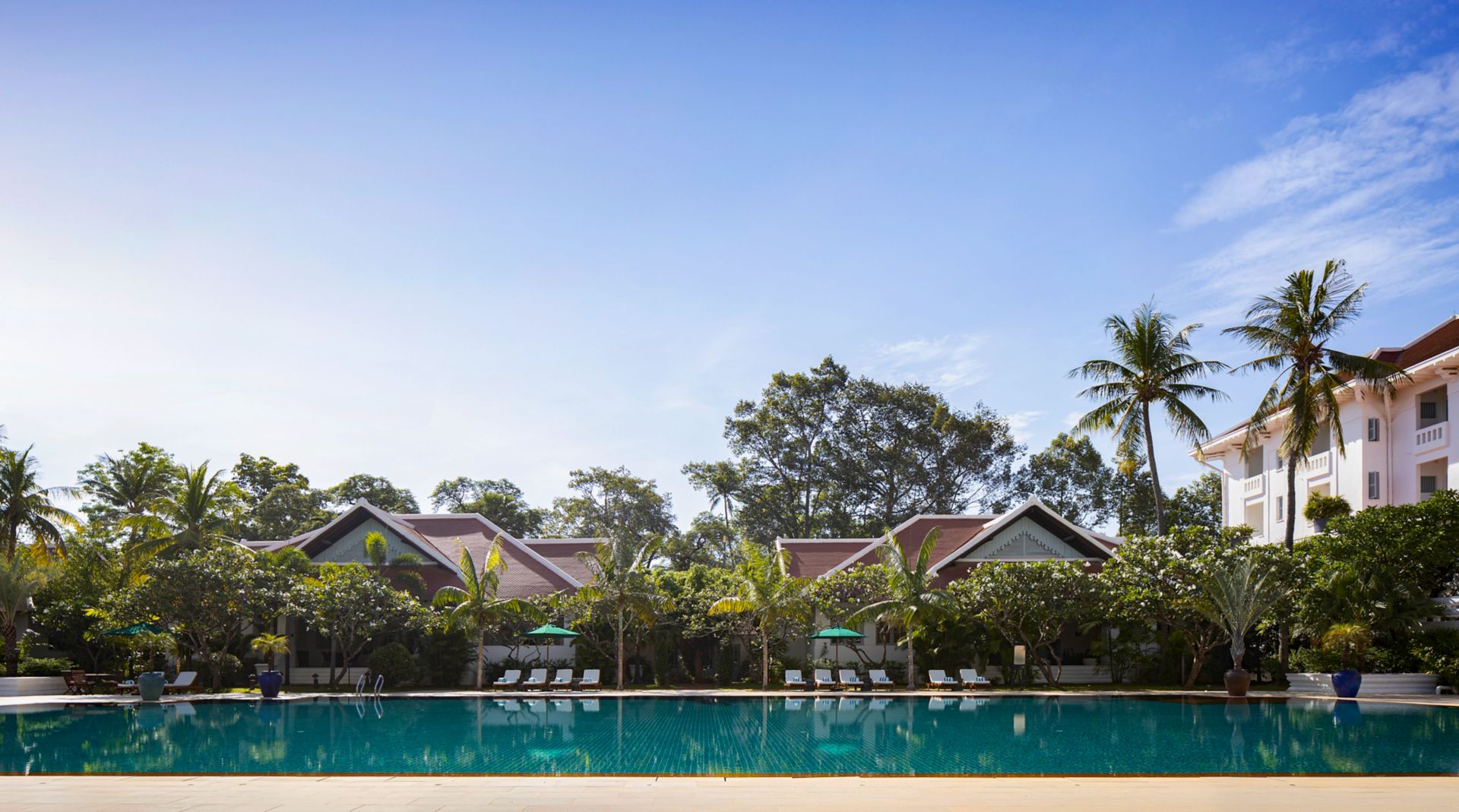
Raffles Spa & Pool
A revitalising oasis offering traditional Khmer and modern treatments, with one of the grandest pools in Cambodia, 35 metres long.
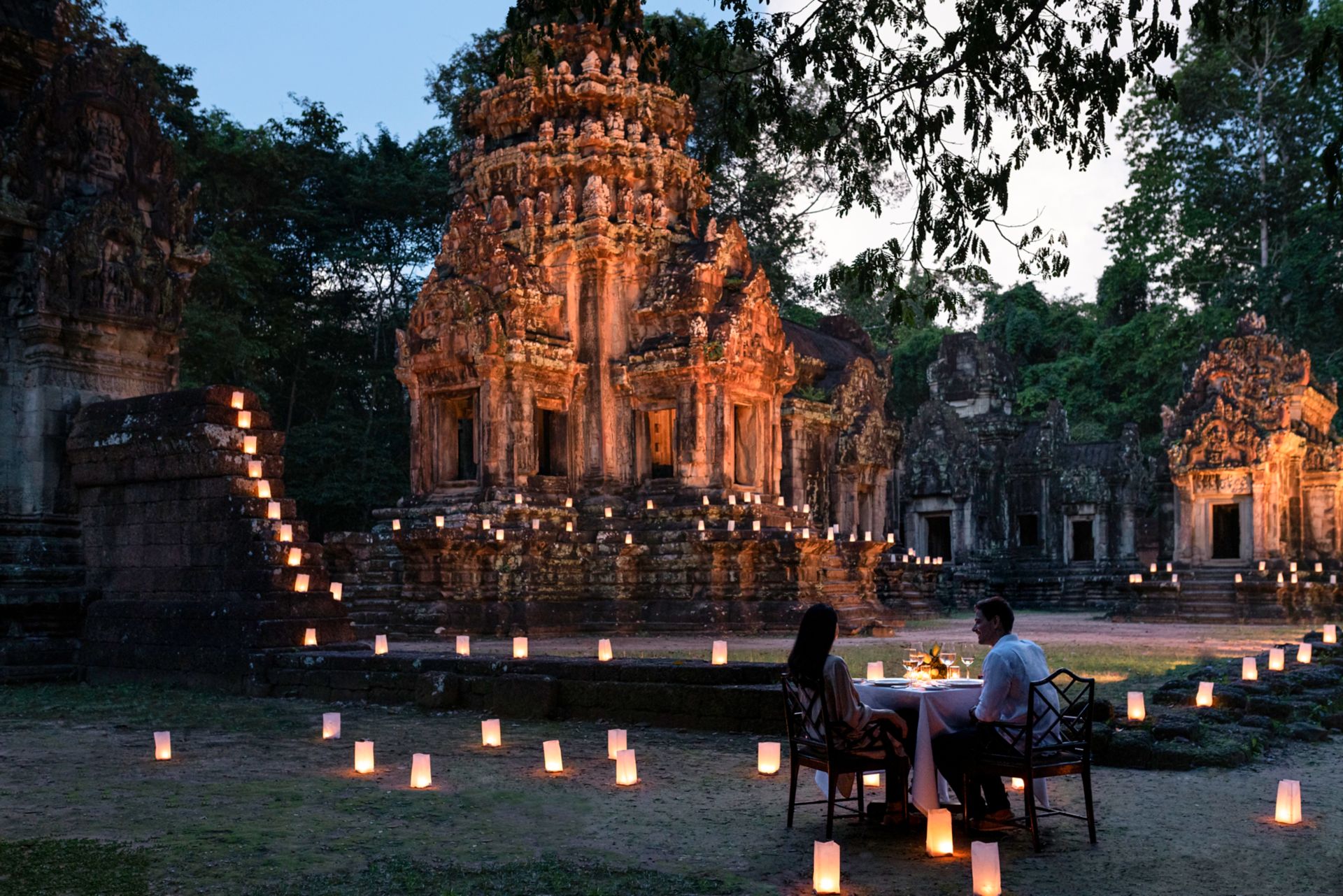
Bespoke Temple Dinner
An evening to treasure, with the mystical Angkor temples as backdrop, local cuisine and a beguiling performance of traditional Apsara dance.
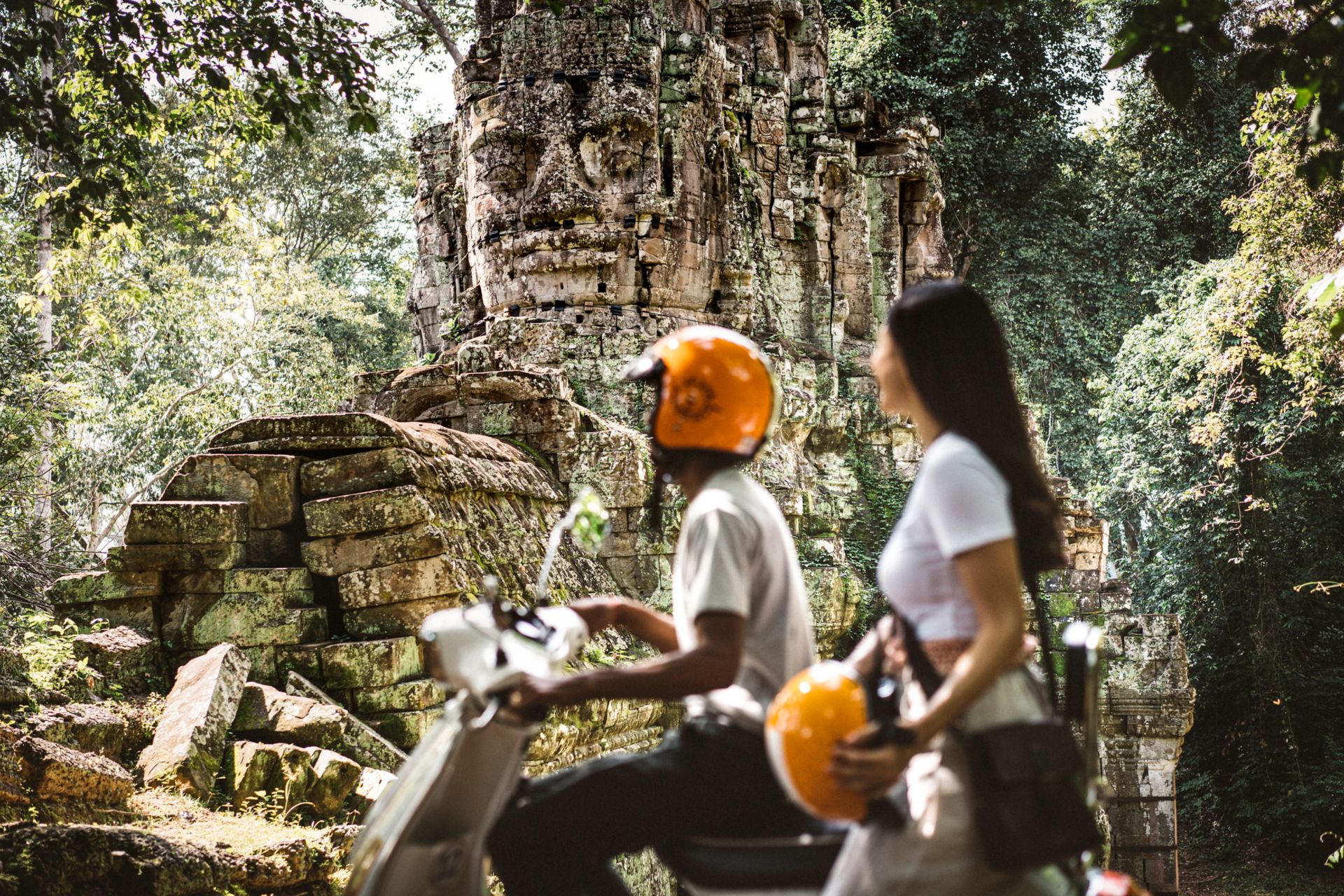
Raffles Curated Journeys
Explore the Angkor temples on a vintage Vespa or take a local tuk-tuk to Banteay Srei temple and Golden Silk Farm.
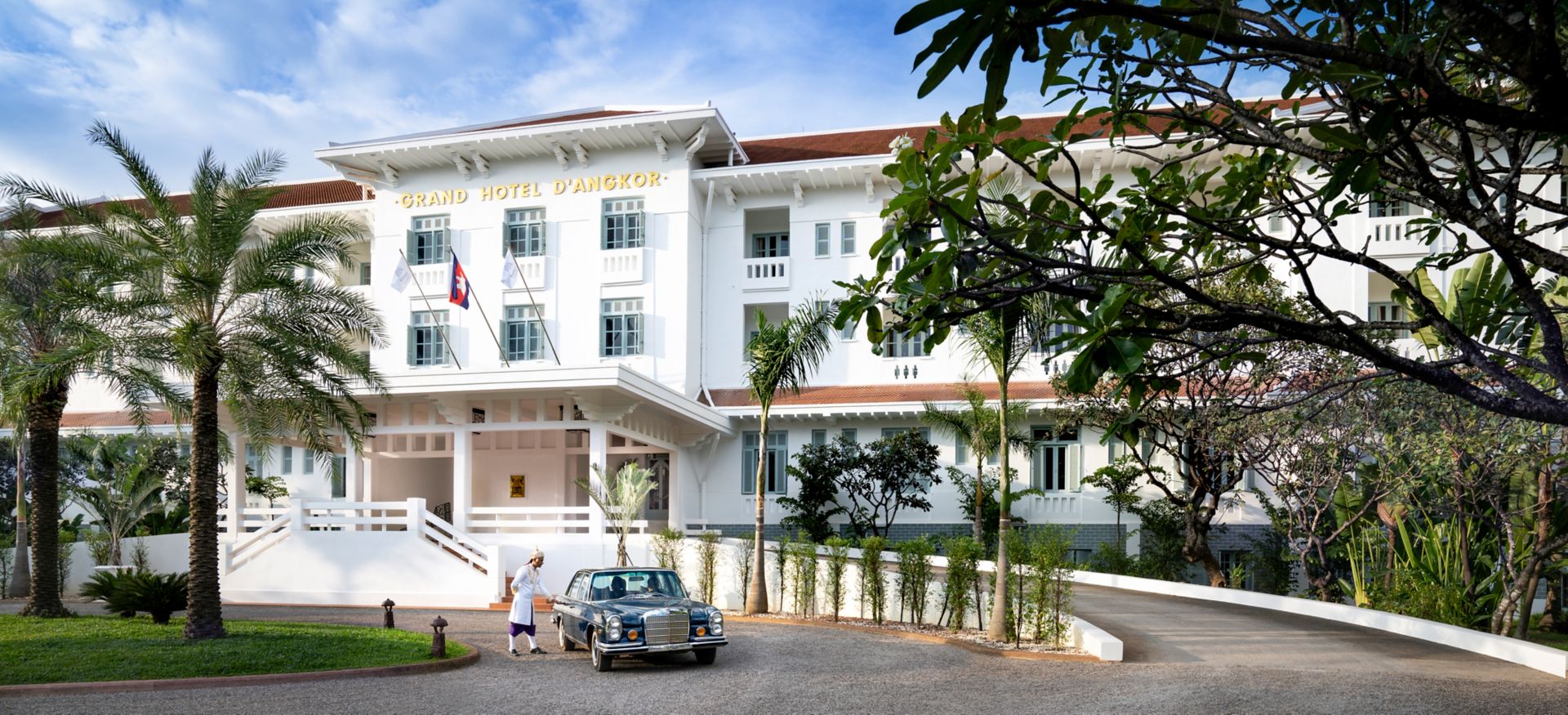
Transportation service
Our distinctive chauffeur-driven limousines are available for airport transfers and tours within Siem Reap or farther, throughout the day.
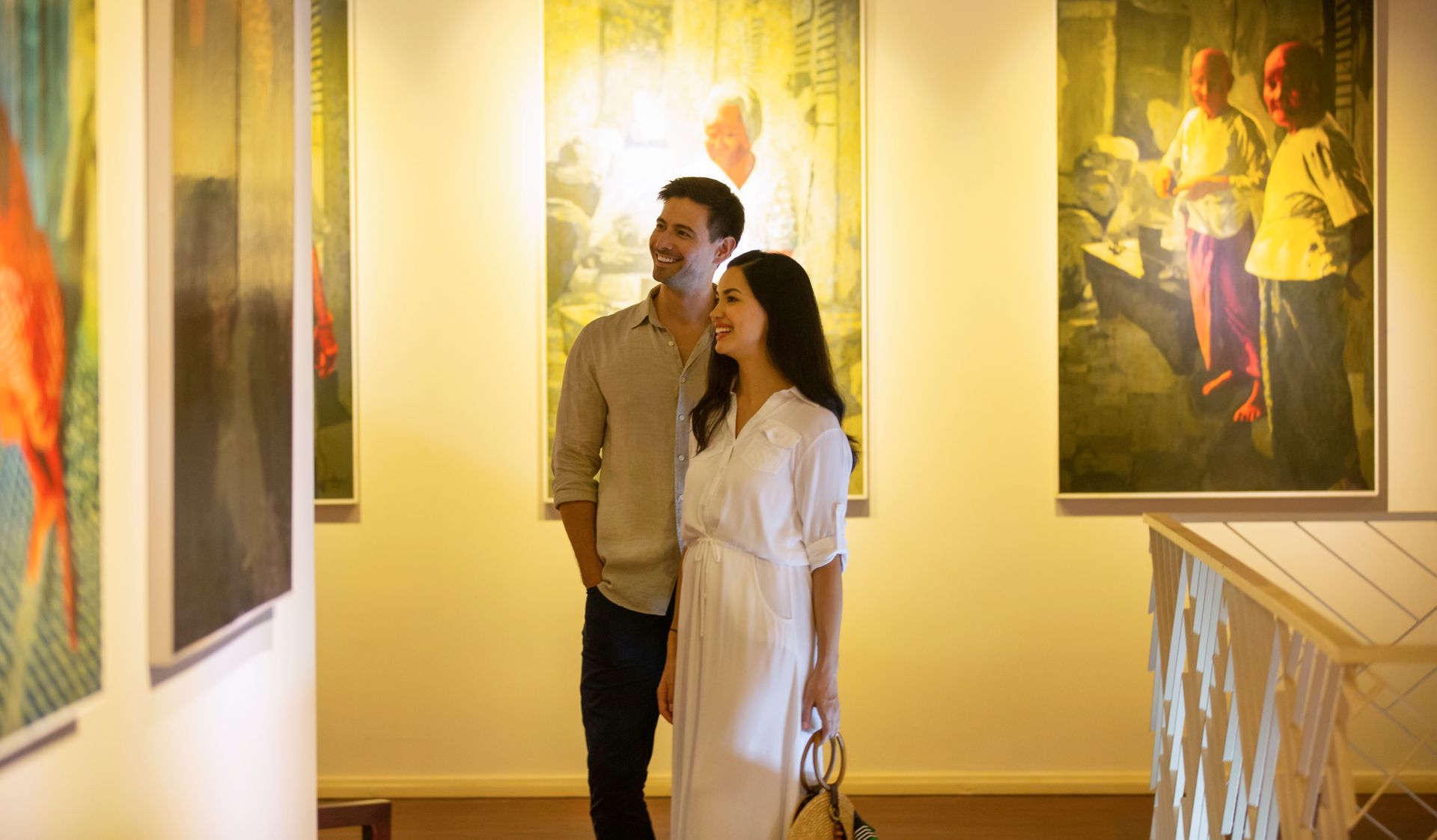
Cultural immersion
Discover early morning blessing ceremonies with monks, the art of lotus flower folding, classes in Khmer cuisine.
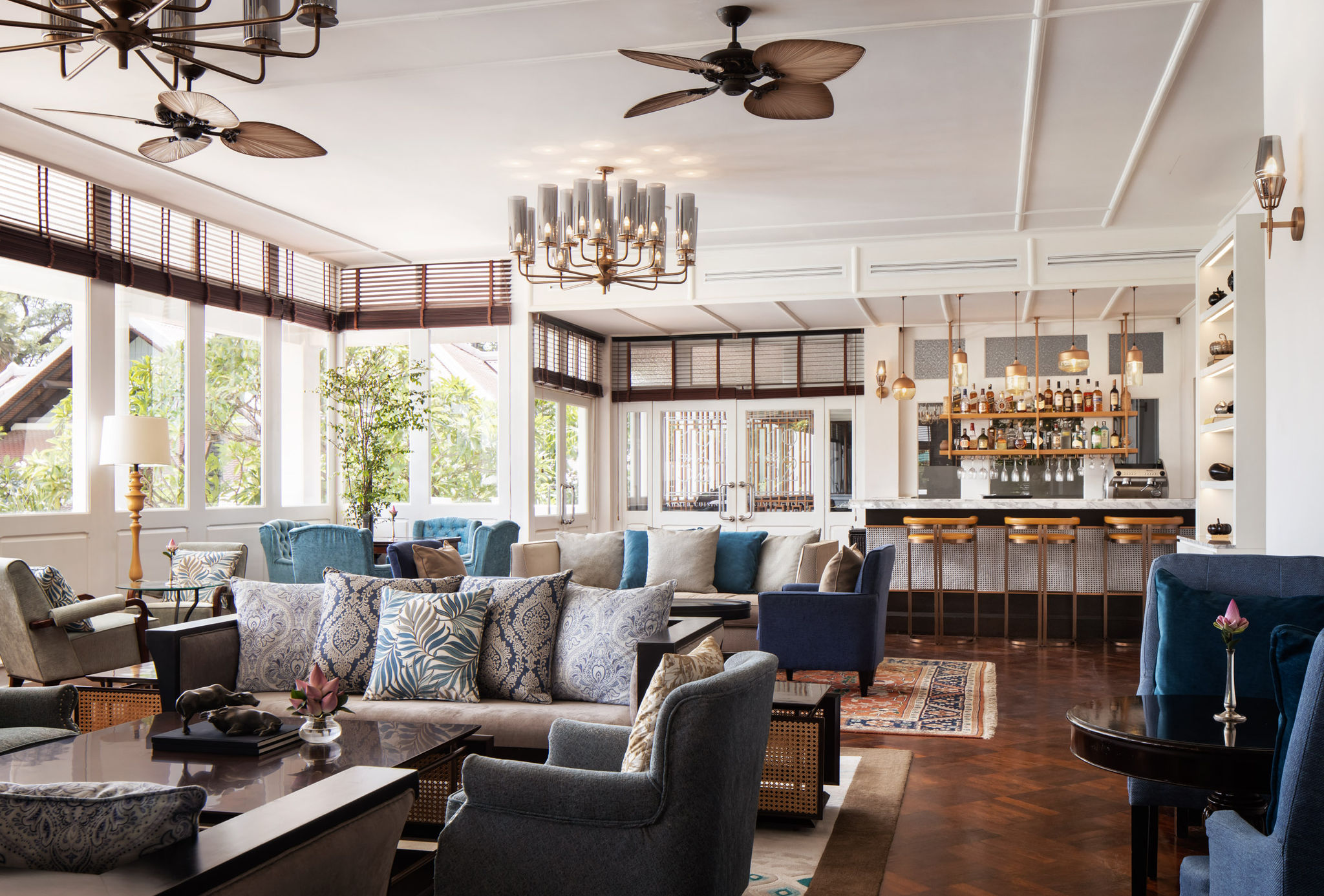
Timeless rituals
Afternoon Tea is served in the conservatory with a resident pianist, while Elephant Bar cocktail hour is a Siem Reap institution.
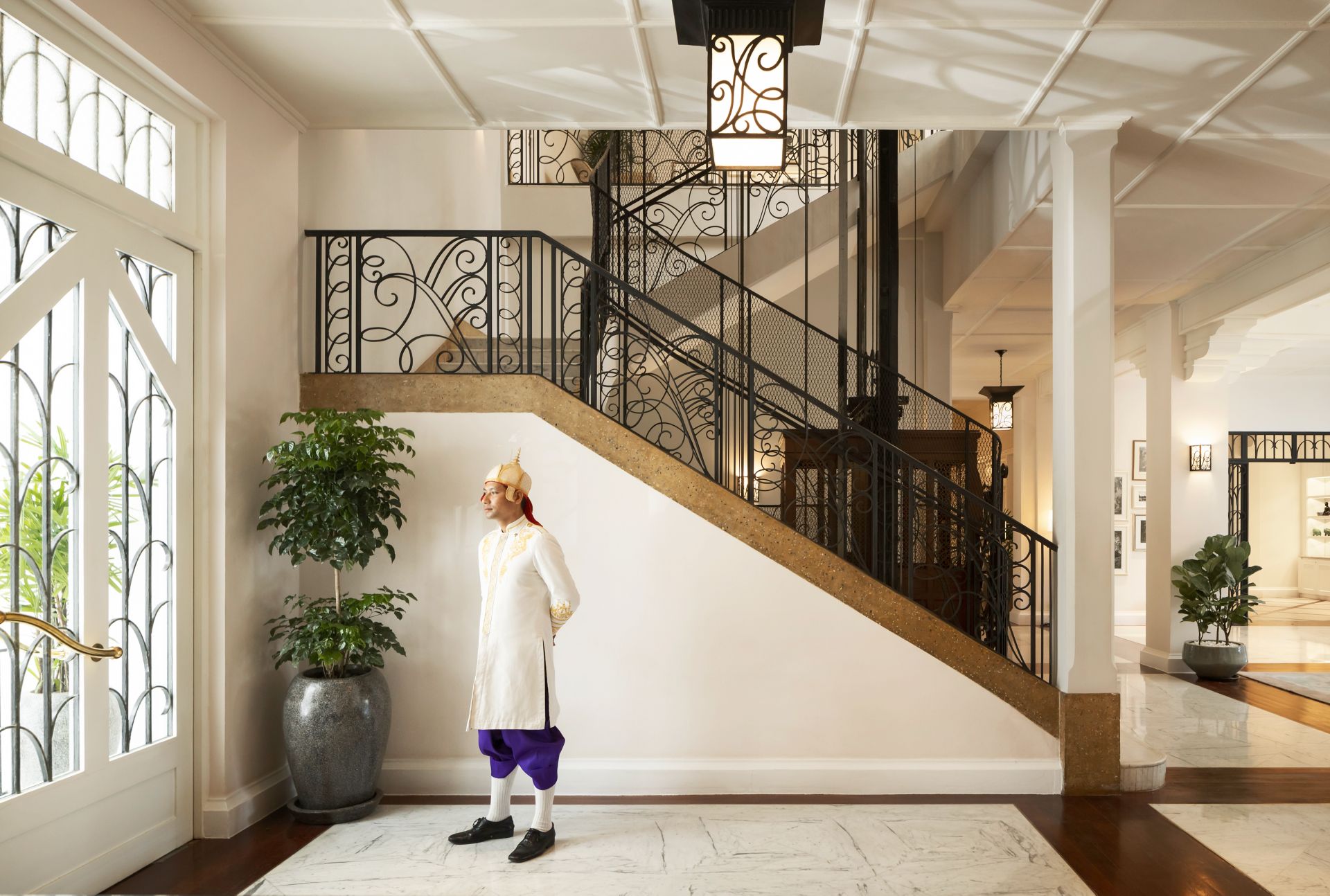
Royal doormen
Following a Royal Guard tradition, our doormen wear silk pantaloons whose colour changes according to which day of the week it is.

Hotel history tour
Discover more about Cambodia’s culture and history with the hotel’s Resident Historian, Saravann Mouth.
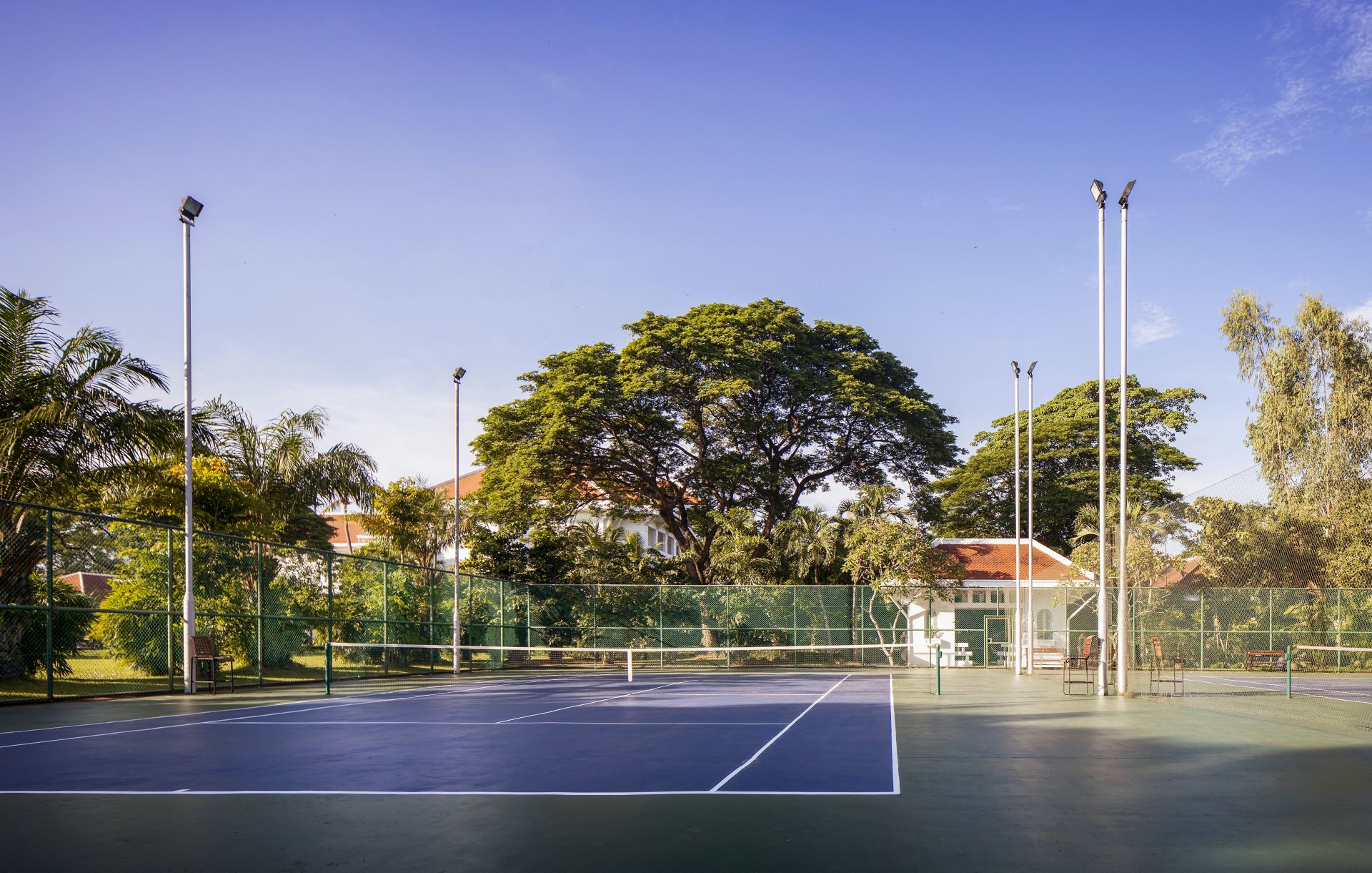
Tennis courts
Anyone for tennis? Two professional courts with racquets and balls available to hire, and a resident coach for lessons.
OUR history
Grand Hotel d’Angkor opened its doors in 1932, a superb example of the great European resort hotels that flourished in Asia in the 1930s, when globetrotting was a glamorous high society pastime and word of the temples at Angkor Wat was getting around. Bungalow culture was thriving in Cambodia, but after long journeys to far-off foreign places, sophisticated guests desired rooms that provided all the comforts of home, with bathrooms, private balconies and inspiring views. They looked for a restaurant and bar where they could share stories and laugh about each other’s exploits.
And so the Grand Hotel d’Angkor came into being, constructed in the finest French Art Deco style with local influences. Early plans for 40 rooms quickly became 60, then more as demand increased and the travel industry boomed. The original timber elevator in the lobby - the oldest lift in Indochina - has taken movie stars, prime ministers, iconic first ladies and sultans to their spacious guest rooms. The halls, salons and gardens have set the stage for incredible joy and peaceful negotiations, having also witnessed unthinkable grief in more troubled times. In 2019 the hotel underwent an extensive renovation, which saw its 119 rooms and suites and other architectural features restored to their former glory.
A timeless landmark
Late 1920s
Origins of a 40-room hotel
In Siem Reap, Hébrard’s proposal outlines the construction of a 40-room hotel which will replace the bungalows that are no longer suitable for the growing number of wealthier tourists flocking to see the temples of Angkor. As early as 1907 the ruins have become a notable tourist destination with some 200 visitors in barely three months. By the late 1920s, the trickle has become a flood. Even during the Great Depression it is recorded that 2,817 tourists visit Angkor in 1934.
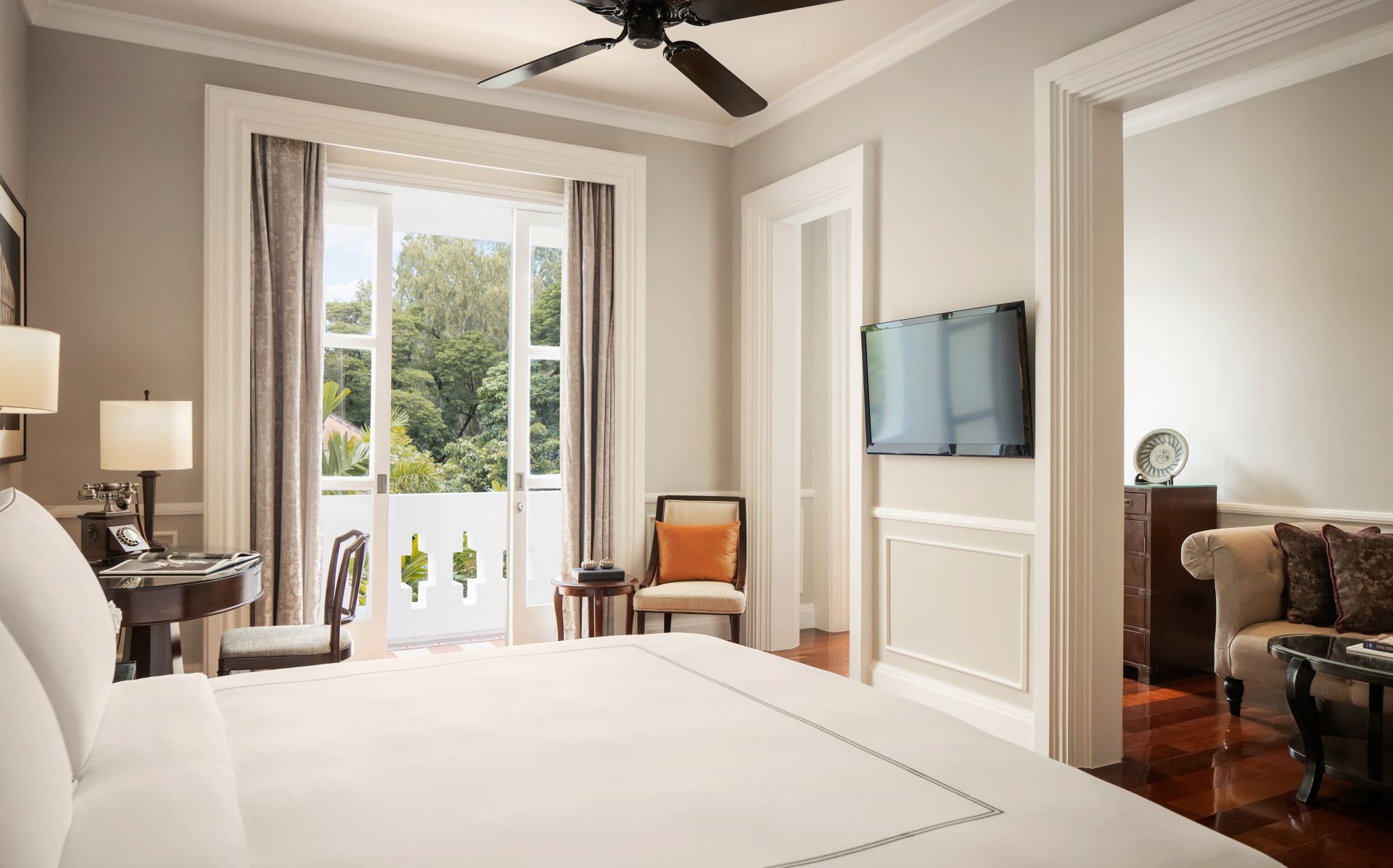
1992
Political awakening
One of the most important functions held at the Grand Hotel is a VIP luncheon on 5 August 1992. Hosted by HRH Prince Norodom Sihanouk and UNTAC leader Yasushi Akashi, the guest list includes diplomats, UNTAC representatives including General John Sanderson, SNC leaders – Hun Sen, Khieu Samphon, Ieng Mouly, HRH Prince Norodom Ranariddh and SOC, KP, FUNCIPEC and DK leaders. The luncheon, with a host table and eight guest tables, culminates in the announcement that UN-sponsored elections will be held in Cambodia in May 1993.
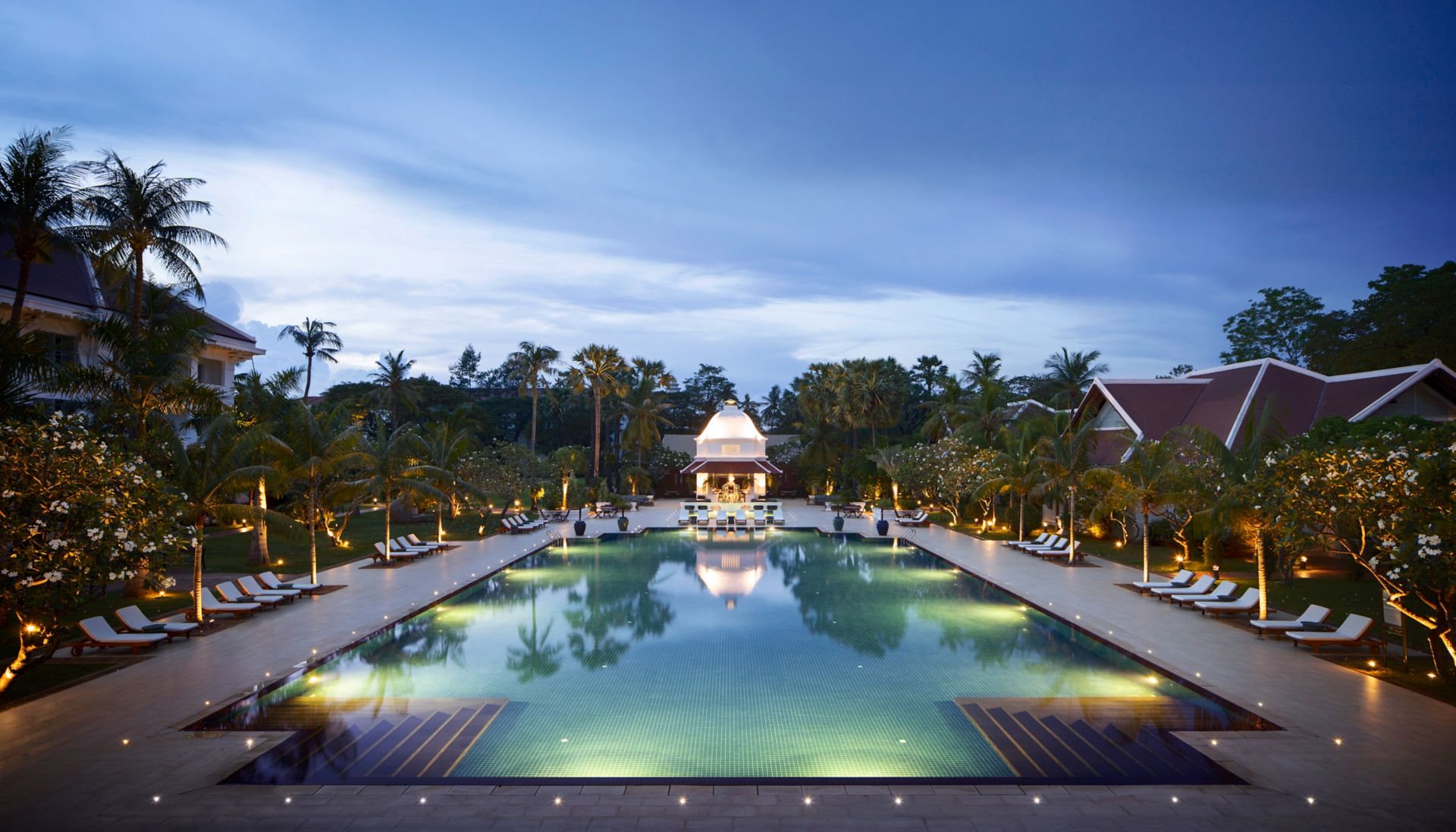
1996
A Raffles renovation
The hotel you see today starts to take shape when Raffles International Limited begins an extensive renovation in March 1996. On 30 December 1997, Raffles Grand Hotel d’Angkor is officially opened with a total of 119 rooms, about twice the number originally built. The lobby is cool and uncluttered, a masterpiece of elegant understatement; while corridors extend seemingly to vanishing points, as if reflected in countless mirrors. In sympathy with the original building, The Conservatory is added to extend the lobby area and to provide a spacious area for cocktails and Afternoon Tea. It overlooks the garden and iconic pool, modelled on the ancient bathing pools of Angkor itself.
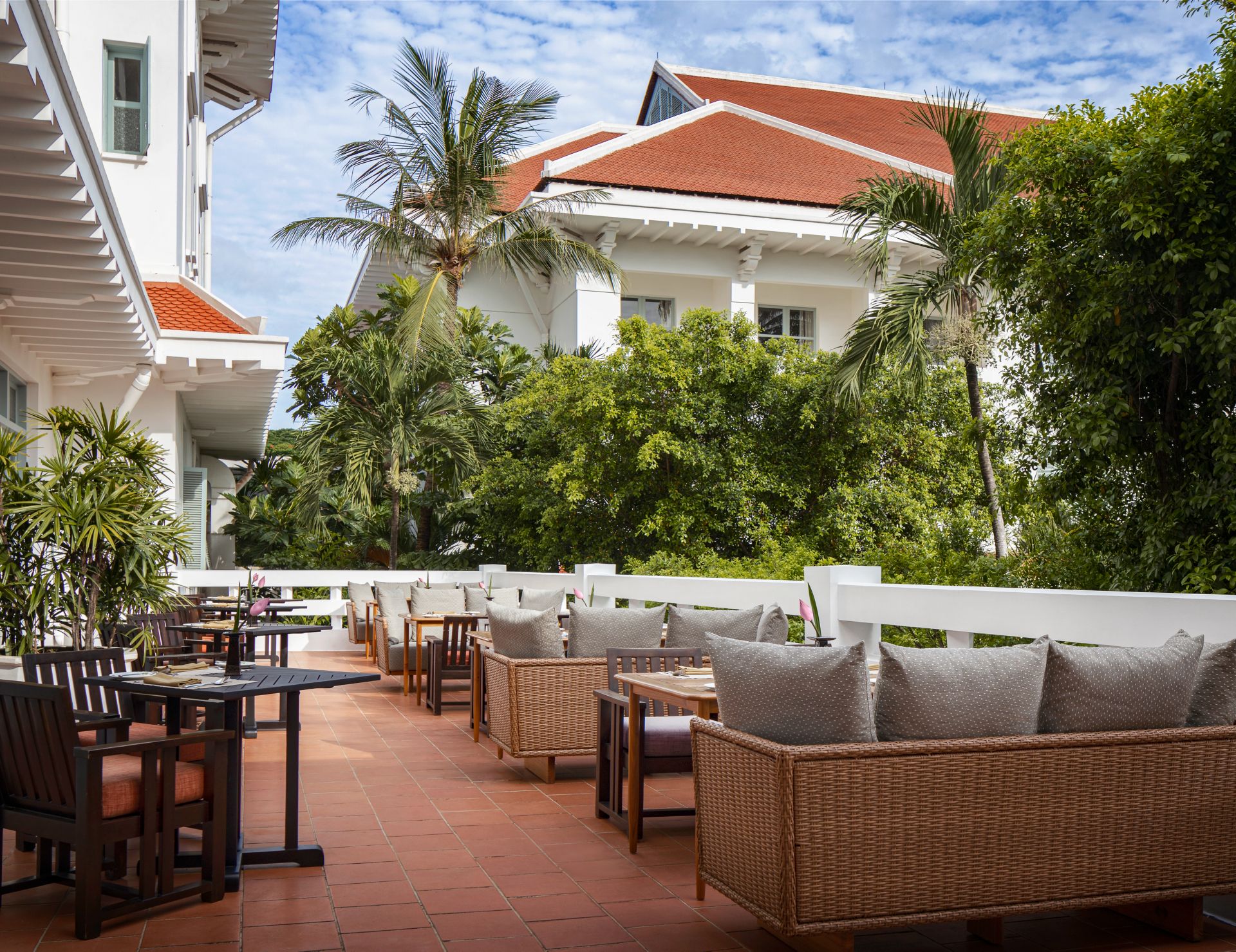
1997
New wings added
Perfectly replicating the architectural style of the main building, a new wing is added to the west, and three magnificent villas, one housing the spa, to the east of the swimming pool. All are set amidst verdant, tropical gardens. The hotel also maintains two open-air performance houses. One is set diagonally opposite the hotel in the public riverside gardens. The other, the Apsara Terrace, is set in the hotel’s private gardens.
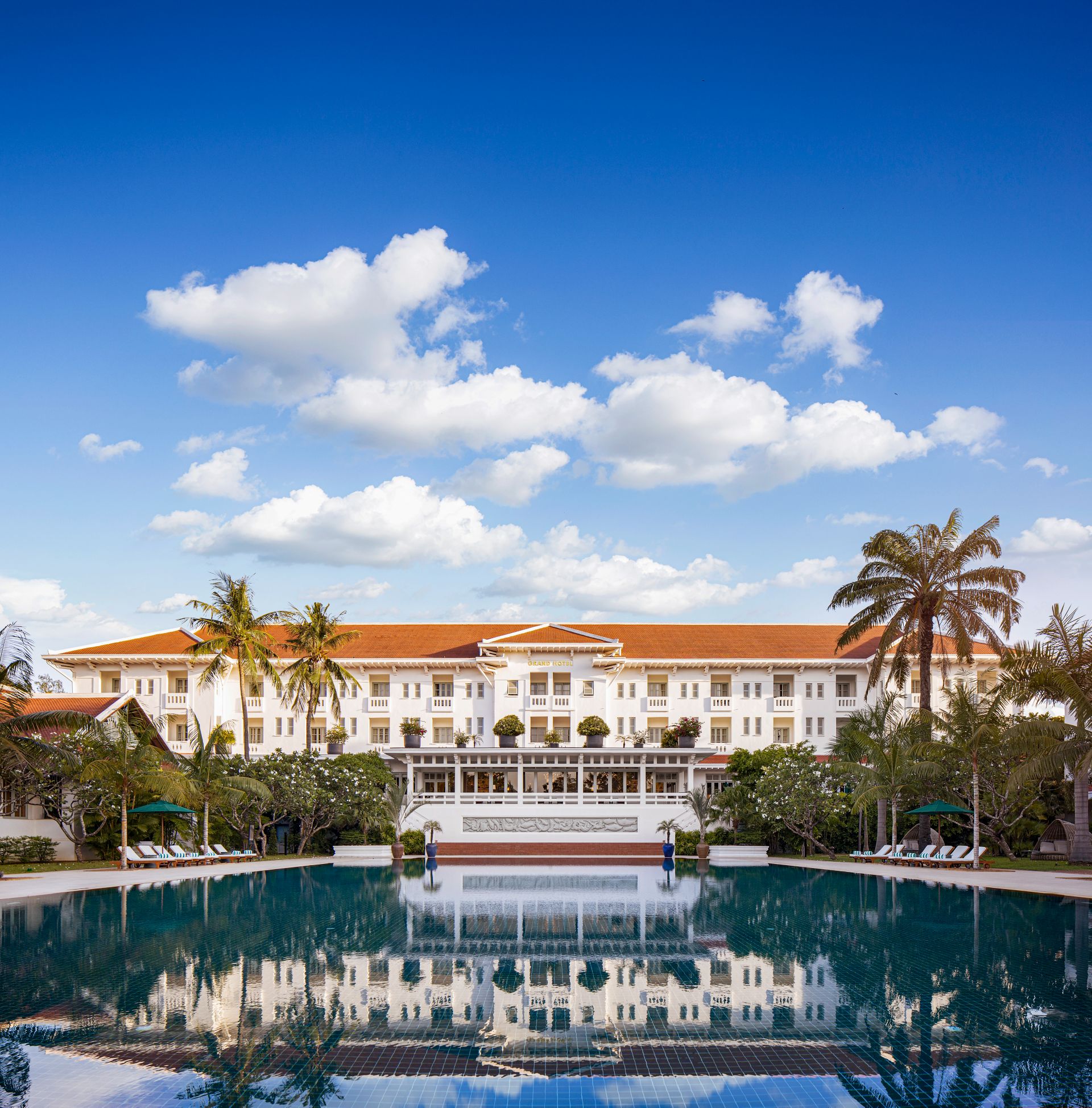
1998
A park, garden and bridge restored
Raffles Hotels & Resorts undertakes the restoration of the park that extends from the hotel to the main road, incorporating the formal gardens, now named the Royal Crusade for Independence Gardens. This fan-shaped park, an imposing frontage to the hotel, is shared by the people of Siem Reap. The garden complex, in addition to the formal garden, consists of an area devoted to the lotus, the sacred Buddhist flower, as well as the river gardens along the bank of the Siem Reap River, and the temple gardens. In 1998, the 1928 Art Deco-style bridge that spans the river is also restored.
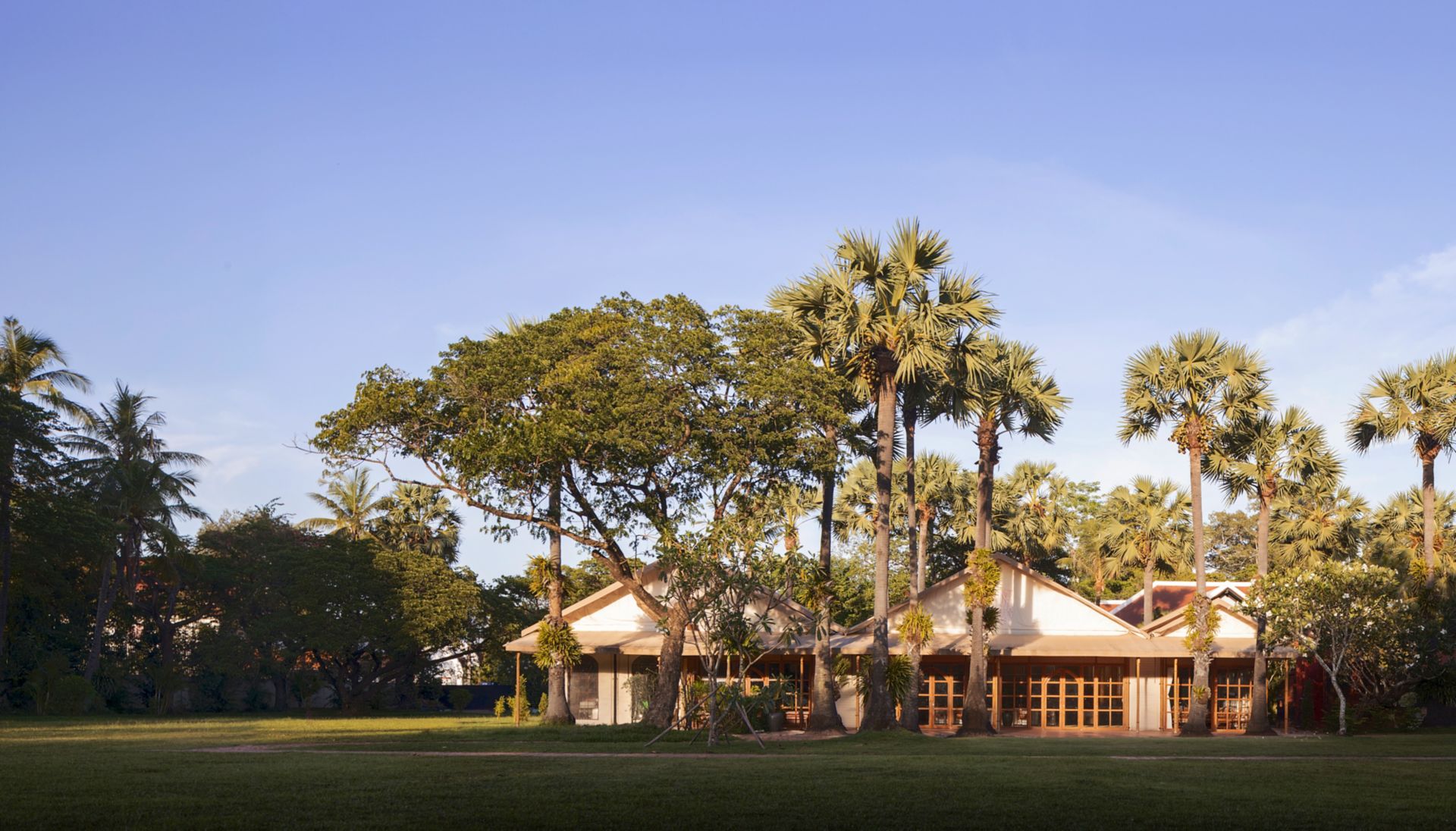
2000s
Sister to Hotel Le Royal
Through securing, restoring and maintaining the historical integrity of the two complementary sister hotels, Hotel Le Royal in Phnom Penh and Grand Hotel d’Angkor at Siem Reap, Raffles Hotels & Resorts is inextricably linked to the colonial office of visionary architect and urban planner, Monsieur Ernest Hébrard.
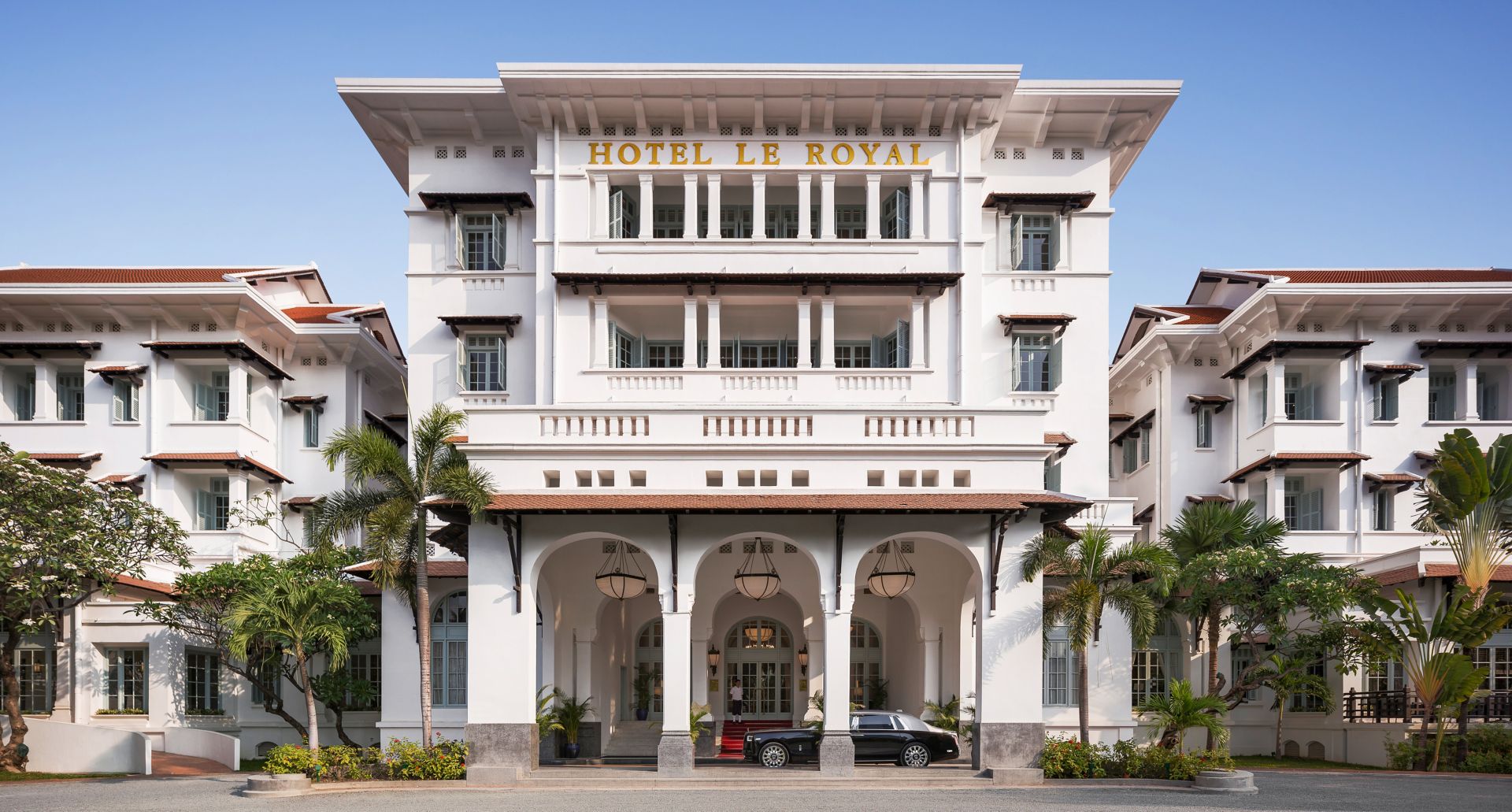
2019
A Raffles classic begins anew
Harking back to the hotel's beginnings, when it opens to answer a growing need for luxurious accommodation for early tourists to Angkor, Grand Hotel d'Angkor continues to lead the way in providing a haven for world travellers with a substantial and sensitive six-month renovation programme.
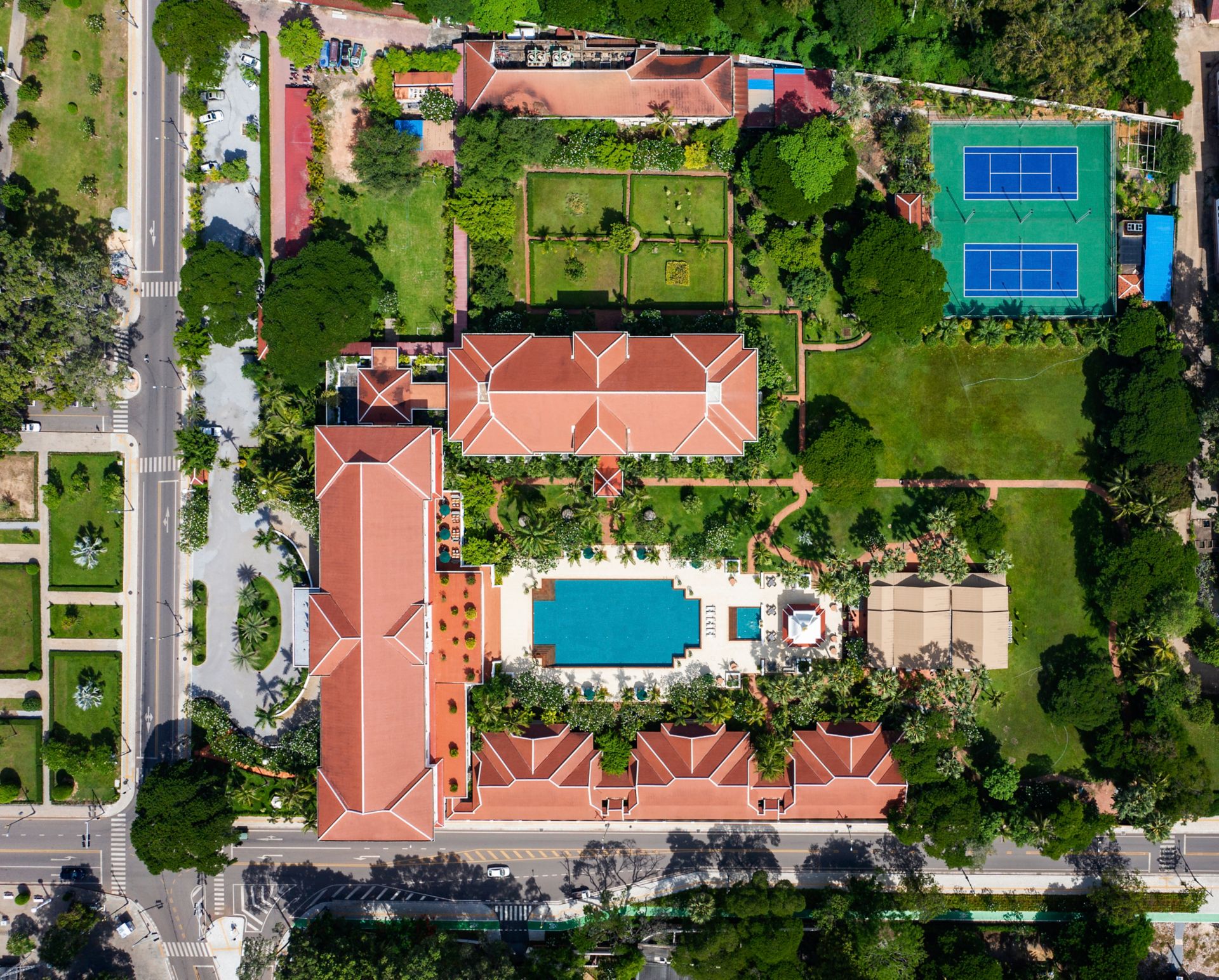
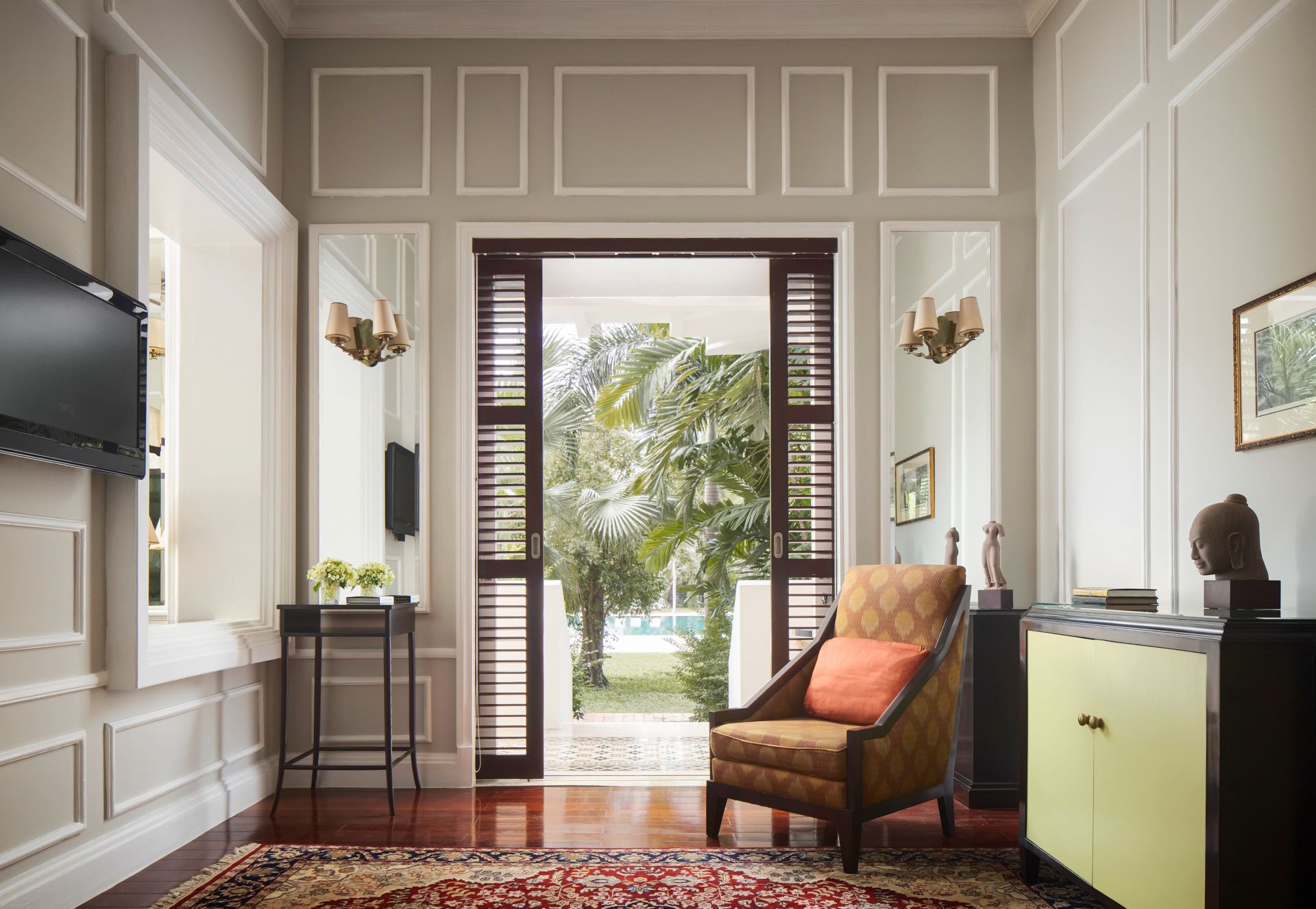
A design refresh
The renovation carried out in 2019 is deeply sensitive to the building’s original architecture. Period architectural details abound, from the ironwork surrounds of the original timber elevator to the floral-motif Art Deco railings on the staircase, all restored to their former pristine condition. The wide eaves of the huge tiled roof are supported at regular intervals by large, tiered concrete supports. These brackets emulate those made of wood that are usually seen bearing the immense weight of Chinese palace roofs.
Guest rooms are wonderfully brighter with new spotlights and window treatments, while hardwood floors imbue them with warmth. Each one opens up to a view of charming street scenes or the plantation style grounds. Easily accessible power ports, USB charging stations and high-speed internet are installed for optimum connectivity. All rooms are outfitted with new Segafredo coffee makers and the beds are updated with Simmons pillow-top mattresses for a good night’s sleep. The bathrooms have had the biggest makeovers, with new Italian tiling and fixtures, including oversized rain showers. Guests can enjoy more space, with cabinets replaced by built-in wardrobes; and true to Raffles tradition, there is a writing desk in every room.
Myth & magic
The hotel is said to have been visited by two highly revered figures of Cambodian folklore, the Big God and the Small God. You can visit their shrine in the 15-acre gardens to be blessed with good fortune. The statues also have an intriguing story to tell – just ask our resident historian who will be happy to fill you in on historic details and the mythology that Cambodians hold so dear.
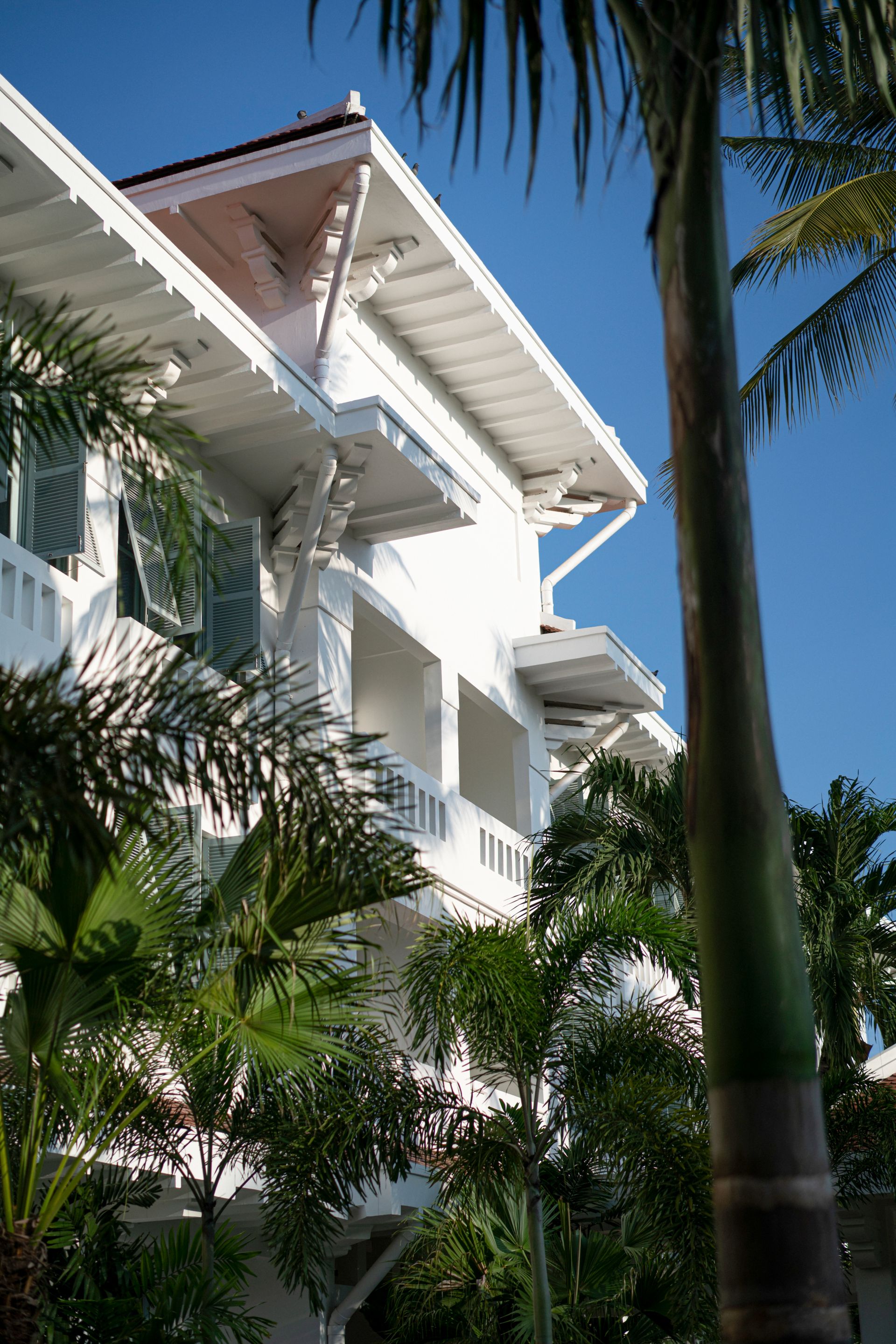
Siem Reap's story
When Grand Hotel d’Angkor first opened its doors in Siem Reap, there were no other buildings to obstruct the view of the temples at Angkor Wat, 8 km away. The French explorers who opened a gateway from the temples to Western civilisation – Henri Mouhot and Henri Marchal among them – knew Siem Reap the way it was before tourism arrived, when it was a simple fishing village with easy access to one of the world’s most phenomenal religious monuments.
The town grew with the burgeoning interest in all things exotic. First came the bungalows, then the grand hotels, along with restaurants, bars, merchants and all the other businesses that go into a thriving holiday resort. Nor was Angkor Wat the only attraction: travellers started coming to see the sunsets over Tonlé Sap Lake, the smiling faces at Bayon temple and mystical Ta Prohm, which early explorers likened to Sleeping Beauty’s impenetrable castle.
Today our Raffles Butlers can guide you to discover some of Siem Reap's treasured secrets, such as the Kandal Village neighbourhood for shopping and, for culinary aficionados, some hidden foodie gems.
Awards & Accolades
A snapshot of the recognition we have received over recent years.
